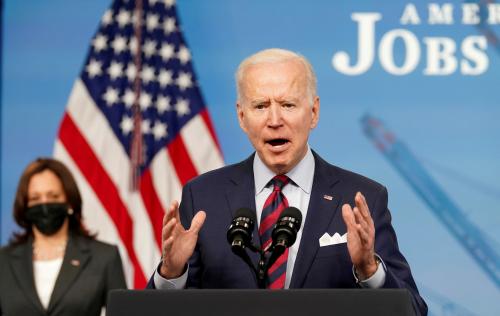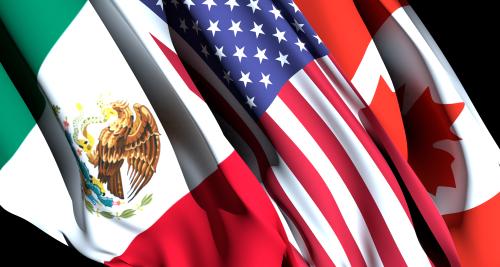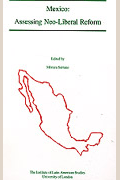Below is a viewpoint from the USMCA Forward 2022 report, which examines key priorities to build a more competitive, inclusive, and sustainable North American economy.
 The new USMCA offers an exciting opportunity to create a stronger and more prosperous North America while strengthening the economies of each of its three partners. On November 18, 2021 at the first meeting in five years, the North American leaders set the right tone in their joint statement proclaiming, “We are closely bound by history, culture, a shared environment, and economic and family ties, and strongly believe that by strengthening our partnership we will be able to respond to a widening range of global challenges.” The preamble to the USMCA itself sets out lofty aspirations including a promise to “enhance and promote the competitiveness of regional exports and firms in global markets, and conditions of fair competition in the region.” Unfortunately, serious fissures have developed beneath the surface that could disrupt the entire agreement.
The new USMCA offers an exciting opportunity to create a stronger and more prosperous North America while strengthening the economies of each of its three partners. On November 18, 2021 at the first meeting in five years, the North American leaders set the right tone in their joint statement proclaiming, “We are closely bound by history, culture, a shared environment, and economic and family ties, and strongly believe that by strengthening our partnership we will be able to respond to a widening range of global challenges.” The preamble to the USMCA itself sets out lofty aspirations including a promise to “enhance and promote the competitiveness of regional exports and firms in global markets, and conditions of fair competition in the region.” Unfortunately, serious fissures have developed beneath the surface that could disrupt the entire agreement.
The last few years provided a bruising experience to the then NAFTA partners. President Trump’s declaration—that he would “tear up NAFTA” unless it was rebalanced in favor of the U.S.—created an investment chill over Canada and Mexico. Alleging that Mexican and Canadian imports of steel and aluminum were a threat to the national security of the U.S., President Trump slapped punitive duties on these products under Section 232 of the Trade Expansion Act of 1962. To Canada, a staunch American ally for over a century, this action was both insulting and economically harmful.
To better understand Canada’s reaction, we must recall that in 1988 many Canadians believed that it was a mistake for Canada to enter a free trade agreement with the U.S. They argued that it risked undermining Canadian sovereignty and would leave Canada more vulnerable to American trade actions, which were often politically motivated. Canadian supporters of free trade argued that the rules of the trade agreement would protect Canada from unfounded and egregious trade actions from the U.S. In a closely fought national election, the issue of free trade became an important political issue. Supporters of free trade eventually won out, and Canada joined the U.S. in a bilateral free trade agreement (FTA) and became an important partner in constructing the NAFTA a few years later.
For 25 years NAFTA benefitted businesses in all three countries. Indeed, many smart companies, their workers, and even whole sectors prospered by using this opportunity to rationalize production to benefit from the relative comparative advantage of different regions in North America. Trade increased dramatically and there were major economic benefits for each of the three partners. However, there were also several problems: Political neglect of the agreement, no real effort to adapt it to changing times, and a serious failure to explain its benefits to the broader community .
Today, Canadians are troubled by an emerging pattern of American behavior whereby the U.S. is restricting imports of traditional manufactured and resource products (many of them Canadian, ranging from automotive products to softwood lumber), while calling for more open trade and strengthened rules for high technology products where the U.S. has a comparative advantage and strong domestic support for open competition.
These developments leave many Canadians wondering if they can build a secure economic future with a partner focused increasingly on going it alone—taking Canada for granted and seemingly being enamored by managed trade. In addition, Canadians are worried that the U.S. is guarding the American economy through unilateral trade remedy tools rather than with rules enshrined in international agreements. Concern about Chinese competition may lie behind some of these measures, but they often hit other countries more severely than China; this was the case when Canada was subjected to the Section 232 steel tariffs.
Canadians have been startled by recent American moves in the automotive sector, an area where Canada and the U.S. pioneered free trade with the Canada-U.S. Auto Pact of 1965. In this particular sector the three North American countries—if they work together—could become the global powerhouse of the new electric, high-tech, automobile industry. Proposals to provide discriminatory tax incentives for American purchasers of vehicles built entirely in the U.S. would stack the deck against investments in Canada and Mexico. Moreover, the Biden administration is set on pushing an egregious interpretation of the automotive rules of origin, invented by the then U.S. Trade Representative Robert Lighthizer. This would make it much more difficult for automobiles made in Canada or Mexico to meet the test to qualify for free trade treatment.
Of course, it is not just the U.S. that needs to act to make the USMCA a success. A new course is needed. To realize the full aspirations of the USMCA, all three partners need to stop fighting each other and figure out a way to collectively win—at home and globally. This will require the U.S., Mexico, and Canada to work together.










Commentary
Making the USMCA work requires careful political commitment: It’s not happening yet
February 28, 2022